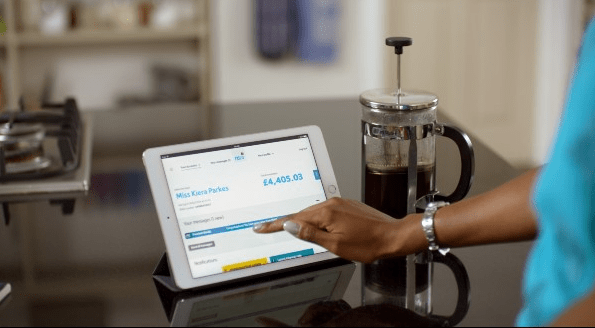Are higher rates on the way for NS&I?
Buried in the Budget small print following Jeremy Hunt’s first full Budget as Chancellor of the Exchequer, delivered on 15th March, it was noted that National Savings & Investment’s (NS&I) Net Financing Target is to be increased for the 2023/24 tax year.
Arrange a free initial consultation
What is National Savings and Investments (NS&I)
Effectively NS&I is the government’s savings bank. Basically, it’s another way for the government to raise the money needed to run the country. In order to do this, it offers savings accounts, such as easy access accounts, a cash ISA and fixed rate bonds, including the more recent addition to the NS&I stable of the Green Savings Bond. The proceeds raised by the latter are earmarked specifically for the government’s chosen green projects including the following;
- Making transport cleaner
- Renewable energy over fossil fuels
- Preventing pollution
- Using energy in a more efficient way
- Protecting natural resources
- Adapting to a changing climate
But in addition to these more standard savings accounts, NS&I also offers the hugely popular Premium Bonds – a prize draw fund that produces thousands of tax-free prizes every month.
A huge benefit for savers with large sums of money is that fact that all the money deposited with NS&I is protected by HM Treasury, which could be millions of pounds. Funds held with other banks or building societies are protected up to a limit of £85,000 per person, per licence.
So, when NS&I is offering competitive savings accounts, this is particularly good news for those with more than £85,000.
What is the Net Financing Target?
Every year, NS&I is targeted with an amount it needs to raise for the government. In the 2022/23 tax year the target was to raise £6 billion, within a range of £3 billion to £9 billion. The latest figures released estimate that NS&I raised £6.1 billion in the last tax year (2022/23) – much of which is probably due to the raft of rate increases made over the last couple of months in particular.
So, with the net financing target increasing to £7.5 billion for the new tax year, does that mean more rate rises are in store for NS&I savers?
What has been happening to rates?
NS&I has made a number of pretty hefty rate increases over the last few months in particular.
Premium Bonds
Premium Bonds are an old favourite – but more akin to a lottery than a savings account. However, unlike the lottery you won’t lose your original capital deposit – the only risk is that you might not win any prizes. On the flipside, you might just win a big one!
Every £1 you invest into Premium Bonds buys a unique bond number with an equal chance of winning a monthly draw prize of between £25 and £1 million – although there are only two £1 million prizes per month. There is no guarantee that you’ll win anything – but anything you do win is tax free.
Back in December 2021 the interest rate applied to the prize fund was 1% and the odds of each premium bond winning a prize was 34,500 to 1. Today, after a series of increases to the prize fund rate, it currently stands at 3.30% and the odds of winning a prize is 24,000 to 1
Rather than earning interest on your premium bonds, NS&I applies a rate of interest to the prize bond fund
Direct Saver and Income Bonds
These accounts are both easy access accounts but as the Income Bonds name suggests the interest earned on this account is paid out to a linked bank account each month. Whereas with the Direct Saver, the interest can be rolled over.
The current rate on both of these accounts is 2.85% AER having increased from 0.15% in December 2021, before the base rate started to rise. This rate is competitive, especially for those with large amounts in cash as you can deposit up to £1 million into Income Bonds and £2 million per person into the Direct Saver account and benefit from the HM Treasury protection.
Guaranteed Income & Guaranteed Growth Bonds
These accounts have only been available for existing bond holders to roll into and quite frankly, until recently were not worth rolling over as the rate were so poor.
However, not only have the rates on offer to maturing customers increased substantially recently but the 1-year guaranteed income and growth bonds have actually been reissued to new customers too.
| 1-Year Guaranteed Growth Bond | 1-Year Guaranteed Growth Bond | |
|---|---|---|
| Interest rate | Issue 70: 4.00% AER | Issue 70: 3.90% gross/3.97% AER |
| Minimum opening balance | £500 | £500 |
| Maximum you can save | £1 million | £1 million |
In addition to these 1 year bonds which are available to new and existing customers, there are longer term bonds available to existing customers who roll over their maturing bonds.
As with the easy access accounts, better rates can be found elsewhere if you are willing to shop around – but is that about to change?
There are also some other less prominent savings accounts with NS&I that have seen rate rises.
The Direct ISA rate has increased from 0.10% to 2.15% since December 2021, whilst the Junior ISA rate has gone up from 1.50% to 3.40%.
Green Savings Bonds
As mentioned earlier, the money raised from these bonds is separate from the amount raised for the general Net Financing Target, as any money raised is earmarked to fund government green projects. The problem is that it has offered such uncompetitive rates that very little has been raised. The latest figures suggest that to date NS&I has raised just £800 million since the first issue in October 2021. The good news is that NS&I seems to realise that in order to encourage savers to support the Government’s green agenda, they need to pay more competitive rates. The latest issue, launched on 7th February this year is paying 4.20% AER – fixed for three years. The current best 3-year bond on the market is paying 4.68% AER.
What does the rise in the Net Financing Target mean for savers?
While rates on these accounts have been increasing recently, the rates on the best buy accounts from the rest of the savings market have been rising too. At the time of writing, the top easy access account is paying 3.40%, while the top 1-year Fixed Term Bond is paying 4.48%*. So, considering NS&I is anticipated to have raised the required amount of money from savers for the 2022/23 tax year, will they need to raise rates to attract more cash in the new tax year?
Of course we hope that is the case but it’s not a huge increase and the very recent rate rises should not only retain existing balances, especially those with larger deposits, but as the rest of the savings market has to compete with a provider that is considered one of the nation’s favourites, it may just manage to raise the amount it needs with rates that are not market leading. So we’ll wait to see what happens next.
If you would like to learn more about how the increase in Net Financing Target could affect your savings, and if you have over £100k in investable assets, why not get in touch with one of our expert team for a free initial consultation?
Arrange a free initial consultation

